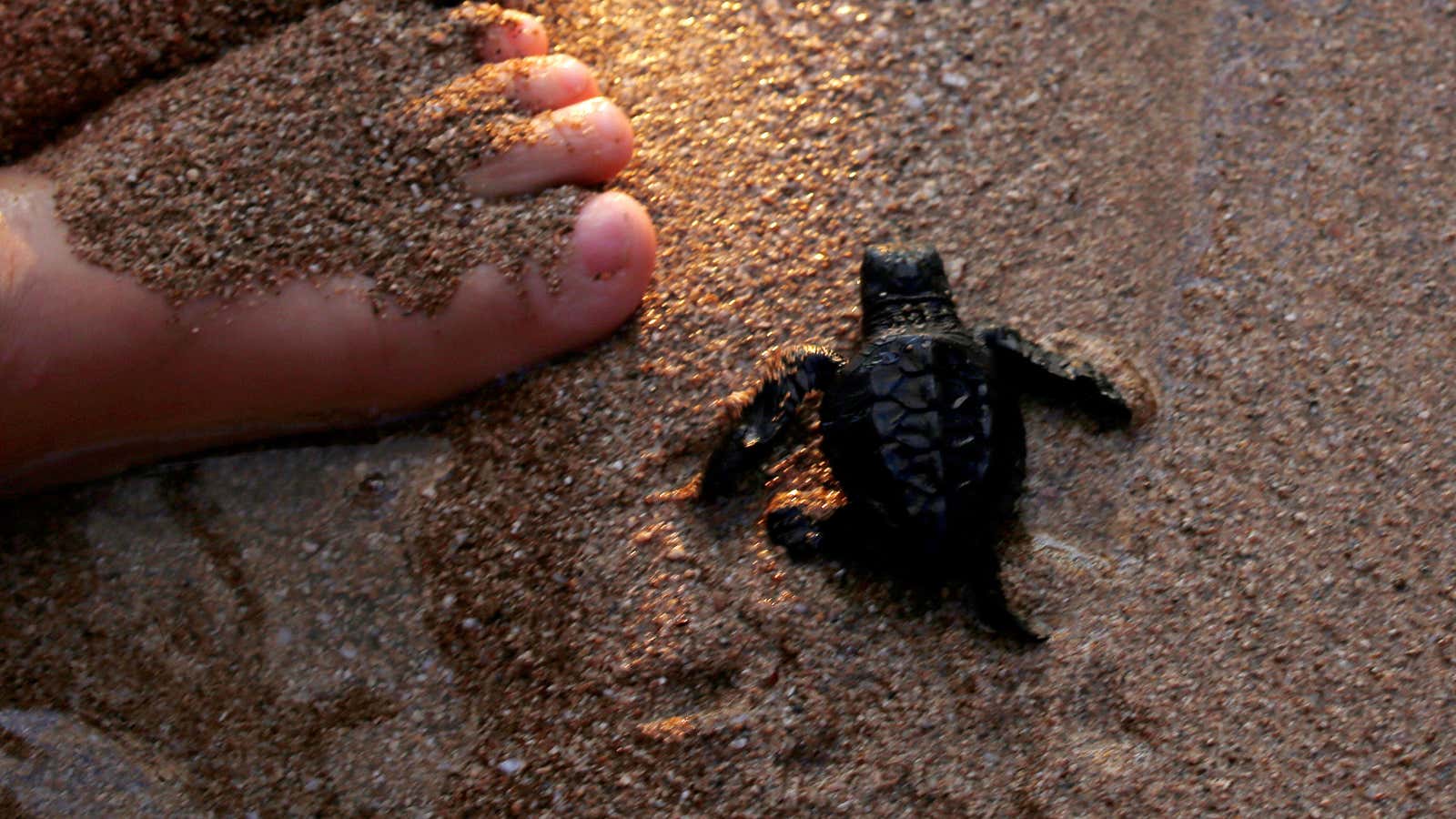If you’re on a beach late one evening, and you’re very lucky, you might someday see the birth of baby sea turtles.
The sand beneath your feet wriggles inexplicably, and tiny little creatures appear by the dozens from a hidden nest, left by their mother when they were eggs. Vulnerable and sweet, the hatchlings scurry to the water’s edge under cover of falling dusk, hoping to avoid predators. There, they throw themselves into the ocean, small and solitary, to begin the dangerous and lonely journey of becoming a turtle. Watching such a scene makes being born human look like a very cushy gig.
Under natural conditions, only about one in 1,000 baby sea turtles survives to adulthood. They are tiny, after all, and the ocean is vast. Add to that threats caused by human development and habit degradation—the eggs are delicate, sensitive to light, sound, and touch—and these gentle beings have become endangered in many places. But according to new research, published today (Jan. 15) in PLOS One, the Endangered Species Act has helped bring sea turtles and other marine mammals in the US back from the brink of extinction.
There are 62 marine mammal and sea turtle species listed as endangered and protected by the American environmental law. Researchers from the Center for Biological Diversity in California wanted to quantify just how effective the legislation has been in recovering imperiled sea species in recent years.
The ESA was passed in 1973. Previous studies have shown that by 2006, the act had aided in the recovery of 227 species, including birds and land mammals, that would simply no longer exist without the legislated conversation efforts. The latest research shows that marine life protected by the ESA is also doing swimmingly and benefitting from the protection.
To conduct the analysis, researchers gathered the best available annual abundance estimates for representative populations of all 62 marine mammal species and sea turtle species listed under the ESA. They analyzed population trends, the magnitude of population change, and recovery status for 23 representative populations of 14 marine mammal species—including the humpback whale in Hawaii and Alaska’s Western Steller sea lion—and eight representative populations of five sea turtle species, all of which reproduce in US waters.
The findings revealed that 78% of marine mammal populations and 75% of sea turtle populations significantly increased after ESA listing, and none of the turtle populations declined after gaining protected status. Meanwhile, 13% of marine mammal populations and 25% of sea turtle populations remained unchanged. Sadly, 9% of marine mammal populations declined despite being listed.
The researchers note that of the 24 populations that increased in abundance in recent years, including large whales, manatees, and sea turtles, all were from species protected for two decades. This indicates that long-term conservation efforts, both national and international, are helping imperiled species to recover, and confirms the researchers’ hypothesis that extended protected status can bring imperiled species back from the brink of extinction. They conclude, “Our analysis not only underscores the capacity of marine mammal and sea turtle populations to rebound after decades of exploitation and habitat degradation, but also highlights the success of marine species conservation.”
